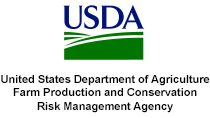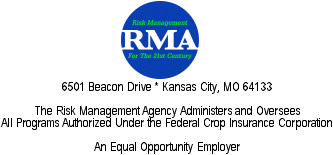

BULLETIN NO.: MGR-99-023
TO: All Reinsured Companies
All Risk Management Field Offices
FROM: Kenneth D. Ackerman 06-29-1999 /s/ Ken Ackerman
Administrator
SUBJECT: Community Outreach - Gleaning and Food Recovery
BACKGROUND:
On December 3, 1995, Secretary of Agriculture Dan Glickman convened a round table meeting to examine opportunities for channeling to needy people millions of pounds of food that goes to waste in this country each year. Secretary Glickman stated, "Each year - in the fields, commercial kitchens, markets, stores, and restaurants - millions of pounds of food goes to waste.... We need to find ways to get this food into the mouths of the hungry and not into the mouth of the dumpster." This meeting launched USDA's campaign to promote increased collaboration between the public and private sector to educate the public about the benefits of gleaning and food recovery and share information on model programs that can be replicated.
Gleaning is described as the collection of crops from farmers' fields that have already been mechanically harvested or fields where it is not economically profitable to harvest. In support of the gleaning initiative, the Risk Management Agency (RMA) will encourage and promote gleaning efforts of the producers who are insured with the crop insurance program. Insurance providers will be encouraged to allow gleaning in situations where a crop or portion of a crop may otherwise go unused or be destroyed.
BULLETIN NO.: MGR-99-023 2
ACTION:
The following actions are effective immediately:
1. Federal Crop Insurance Corporation will recognize only those charitable organizations listed in the Department of Agriculture Handbook, "A Citizen's Guide to Food Recovery." If a particular organization is not listed in the handbook, contact the State coordinator listed in the handbook. The State coordinator will provide updated information on approved organizations added to the list. This handbook also contains other relevant information on gleaning and food recovery, such as the Good Samaritan Law that protects the insured for liability issues. The Citizen's Guide to Food Recovery can be located on the internet at www.fns.usda.gov/fns.
2. Gleaning will be allowed for all insured crops as follows:
A. Harvested acreage
(1) Gleaning will be allowed on crop acreage that has been harvested as long as any remaining crop production on the harvested acreage cannot be harvested using normal and proper harvest methods (e.g., production from lodged corn that can only be hand harvested).
(2) Some crop provisions (e.g., tomatoes, peppers) state that production not meeting the specific requirements of the crop provisions will not be considered production to count; other crop provisions may contain similar provisions. Producers should be encouraged to permit such production to be gleaned.
(3) For harvested production declared zero market value (quality adjusted to zero value or zero production to count) and is required to be destroyed (e.g., corn with quality adjustment factor of .000); gleaning or food recovery of any salvageable production will be allowed (except as limited by item 3 below) and such production will not be considered as production to count.
B. Unharvested acreage
(1) If the crop can be harvested, but the insured elects not to harvest, the acreage must be appraised before gleaning is allowed and such appraisal will be used as production to count.
BULLETIN NO.: MGR-99-023 3
(2) On crop acreage that is routinely mechanically harvested and is damaged by insured causes (e.g., wind, hurricane, etc.) to the extent that it cannot be mechanically harvested with normal harvest equipment, no production is currently counted. However, if the insured elects to hand harvest or use specialized harvesting equipment, the production is counted. If the insured elects to allow gleaning in these situations, production on this acreage will not be considered production to count.
(3) Unharvested production declared zero value (quality adjusted to zero value or zero production to count) and is required to be destroyed (e.g., potatoes in excess of 5.1 percent tuber rot); gleaning or food recovery of any salvageable production will be allowed (except as limited by item 3 below) and such production will not be considered as production to count.
NOTE: When gleaning is allowed for acreage qualifying as unharvested acreage, the acreage that is gleaned will not be considered harvested.
3. In cases where FCIC normally requires destruction of harvested or unharvested zero-value production (quality adjusted to zero value or zero production to count), gleaning can be allowed as long as the crop does not contain substances or conditions identified by the Food and Drug Administration or other public health organizations of the United States as injurious to human or animal health.
4. If any compensation is received by the insured from any qualified charitable organization for gleaning, it will not be considered gleaning for crop insurance purposes. In this event the following actions apply:
A. A corrected claim will be prepared for items 2 A (1), 2 A (3), 2 B (2) and 2 B (3). The harvested production will be used as production to count and, in cases where production records are not available, the amount received for gleaning will be divided by the elected price election to determine production to count. For dollar amount crops, the dollar amount received will be used to determine the amount of production or value to count.
B. For items 2 A (2) and 2 B (1); the claim will not be corrected.
Some States allow tax credits and also allow other State and federal tax advantages for donating gleaned commodities. However, these considerations will not be regarded as compensation.
5. The insurance provider will code acreage that is released to be gleaned (for items 2 A (1), 2 A (3), use code "HG"; for 2 B (1), 2 B (2), and 2 B (3), use code "UG") in the column entitled "Stage" on the claim form. The charitable organization's name and address will be shown on the claim form in the "Narrative" section, or on a Special Report.
BULLETIN NO.: MGR-99-023 4
6. A certification form will be prepared for the following items:
A. For item 2 B (2), the certification on the Certification Form as required in the Loss Adjustment Manual in paragraph 102 H (5) is still required except the statement must be modified as follows: " . . . that the damaged acreage that cannot be mechanically harvested with normal harvest equipment will not be harvested and if the acreage is gleaned it will be gleaned by the organization shown in the narrative of the claim form (or other USDA approved charitable organizations) and the insured will not receive any compensation from the organization. If the insured harvests . . ."
B. For items 2 A (3) and 2 B (3): Before a claim can be finalized, the insurance provider must receive a completed Certification Form from the insured showing the insured's certification of the name and address of the approved charitable organization that gleaned the acreage and/or production released for gleaning, that ALL such acreage and production was gleaned, and that the insured received no compensation from the charitable organization. Refer to the LAM for procedures regarding the Certification Form.
NOTE: When the entire production is not gleaned on any acreage as indicated by the insured on the Certification Form, then the adjuster must make a farm visit to verify that the balance of the production has been destroyed or a completed certification form will need to be signed for destruction of the balance of the production.
DISPOSAL:
This Bulletin will remain in effect until incorporated into the Loss Adjustment Manual.
